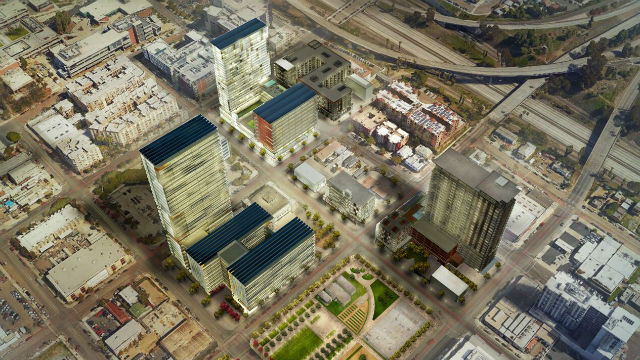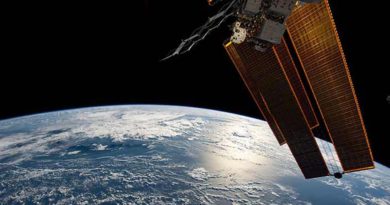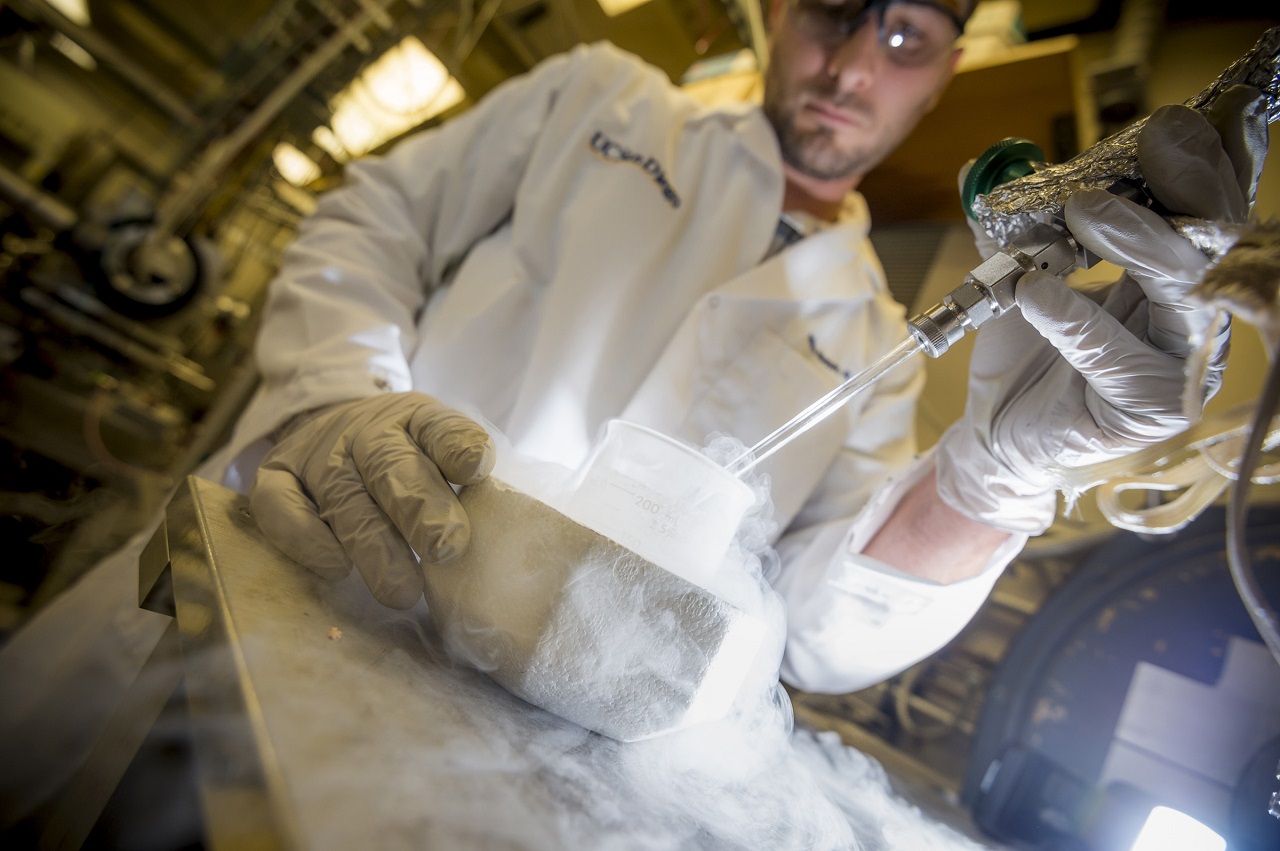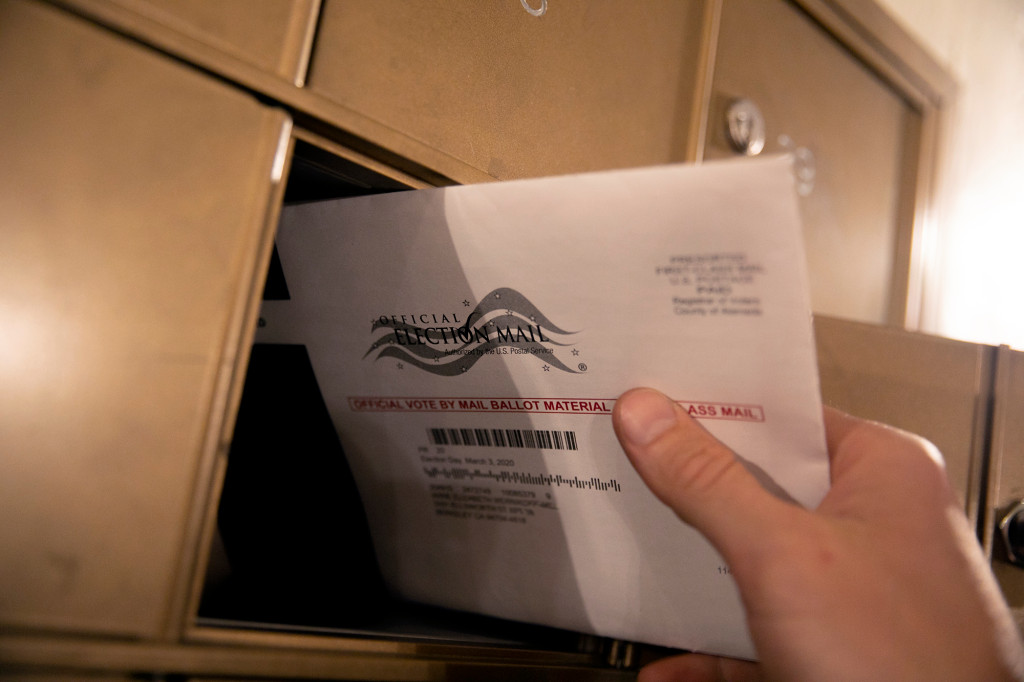Daily Business Report-Sept. 28, 2015
Rendering shows master plan for the Maker’s Quarter. Entrance to Route 94 is at right.
Developers Release Master Plan
For Downtown’s ‘Makers Quarter’
Developers of the emerging “Makers Quarter” innovation district in Downtown’s East Village unveiled their master plan for the area on Friday.
L2HP, a development team comprised of Lankford & Associates, HP Investors and Hensel Phelps, plan to build more than 1 million square feet of office space, hundreds of new housing units and boutique retail space over the next three to seven years.
“Makers Quarter offers the environment that Downtown San Diego needs in order to attract an educated, millennial workforce. Its development will strengthen our image as a city that embraces culture, creativity and cutting-edge innovation,” said Kris Michell, CEO of the Downtown San Diego Partnership.
The area is already home to SILO and SMARTS Farm outdoor venues, FabLab San Diego, the Urban Discovery Academy and Fuse Integration.
L2HP expects the first residential project, Broadstone Makers Quarter, to break ground in the fall, and construction of the first office building, a collaborative office hub, to begin in the spring of 2016.
“We are laser focused on attracting the world’s most innovative companies and brightest talent into Makers Quarter. To that end, we are actively recruiting tenants that fit for our neighborhood’s culture, and can hasten San Diego’s progress towards becoming America’s most innovative city,” said Robert Lankford, president and CEO of Lankford & Associates.
__________________________________________________
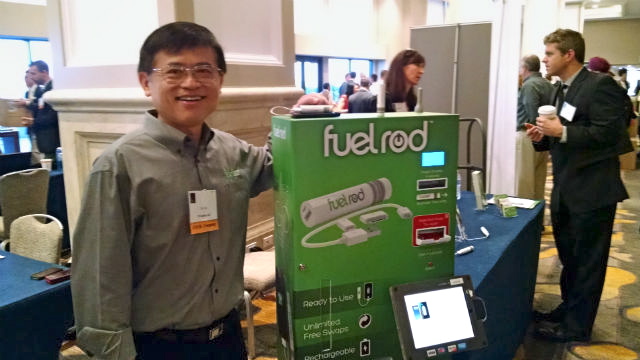
San Diego Isn’t Silicon Valley,
But That’s an Advantage for Startups
San Diego may be a “secondary market” for technology startups from the towering perspective of Silicon Valley, but one venture capitalist sees this as an important advantage.
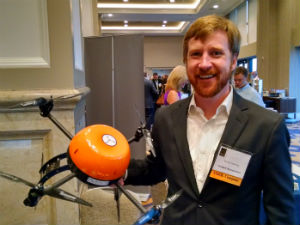
“Outside of Silicon Valley there’s great talent and great firms to be built,” said Fred Wang, a general partner at Trinity Ventures, a venture-capital firm located on Silicon Valley’s fabled Sand Hill Road.
He said San Diego’s advantages include great weather, expertise at UC San Diego, military spending and established tech companies like Qualcomm. For startups, there’s less competition for funding, and lower costs that give a new company a longer “runway” to take off.
“Most importantly, you’re outside of this echo chamber that is Silicon Valley,” he added, making it easier for a new company to stand out.
Wang spoke to a crowd of 600 people Friday at the San Diego Venture Group’s 13th annual Venture Summit at the Manchester Grand Hyatt downtown.
Outside the ballroom, more than 35 of the venture group’s “cool companies” of 2015 were displaying their technology and business plans for potential investors. Among them:
• Planck Aerosystems is using drones to find fish at sea, saving fuel for commercial fisherman and helping sport fisherman make their prize catch.
• Dermala, a spinoff from UC San Diego, is investigating the use of microbes commonly found on human skin to develop new medicines.
• Fuel Rod, has placed 129 kiosks at airports where road warriors can exchange exhausted cell phone batteries for fully charged ones. “Someday we’d like to be in every Starbucks,” said Kendall Yeagley.
San Diego may lag some other regions in total venture funding, but Wang said it’s well placed for the future.
“The good news is that you’re in California, and California owns the lion’s share of venture dollars,” he said.
SDG&E Wants Customers to Share Costs
Of Wildfires That it’s Equipment Caused
San Diego Gas & Electric has asked the California Public Utilities Commission for approval to charge customers $379 million to help pay for 2007 wildfire costs.
The company said it initially faced $4 billion in claims arising from the fires, but it decided to settle as many as possible to reduce the overall customer cost impact.
Settlement costs amounted to $2.4 billion, the majority of which was covered by SDG&E’s liability insurance and recoveries from third parties. SDG&E proposes its shareholders pay 10 percent or $42 million. If approved, the utility proposes to spread out the remaining $379 million over six years, which would result in a monthly bill impact of less than $1.70 for a typical residential customer using 500 kilowatt-hours of electricity per month.
“We have gone to great lengths to minimize the impact to our customers by successfully settling these lawsuits rather than taking them to trial, which would have been significantly more costly,” said Lee Schavrien, chief administrative officer for SDG&E. “We are in the final stages of this proceeding, and after eight years, we believe that, as a company, a community and a region, we are much better prepared for a future fire emergency.”
County Supervisor Dianne Jacob has said customers shouldn’t have to pay for the company’s misdeeds. The cause was blamed on SDG&E equipment.
A final PUC decision is expected in the first quarter of 2017.
Portfolium Raises $1.2M to Help
College Students Land That First Job
Portfolium, a Web-based social network for students preparing to start their careers, said it has closed on $1.2 million in new venture funding, bringing its total funding to $2.1 million since 2013, when the San Diego-based startup was founded.
The investors are New York’s University Ventures, an investment firm focused exclusively on global higher education (and not to be confused with student-managed University Ventures in Salt Lake City, Utah); the new angel group Seed San Diego; and Vertical Venture Partners, a Silicon Valley fund that oversees the UC San Diego-centric Triton Technology Fund.
The startup intends to use the new funding at least partly to re-imagine the near-graduation process of campus recruiting. Referring to an estimated $19 billion that companies spend each year on campus recruiting programs, Portfolium says it’s working to accelerate that recruiting effort by helping companies quickly come up with a short list of qualified student job candidates.
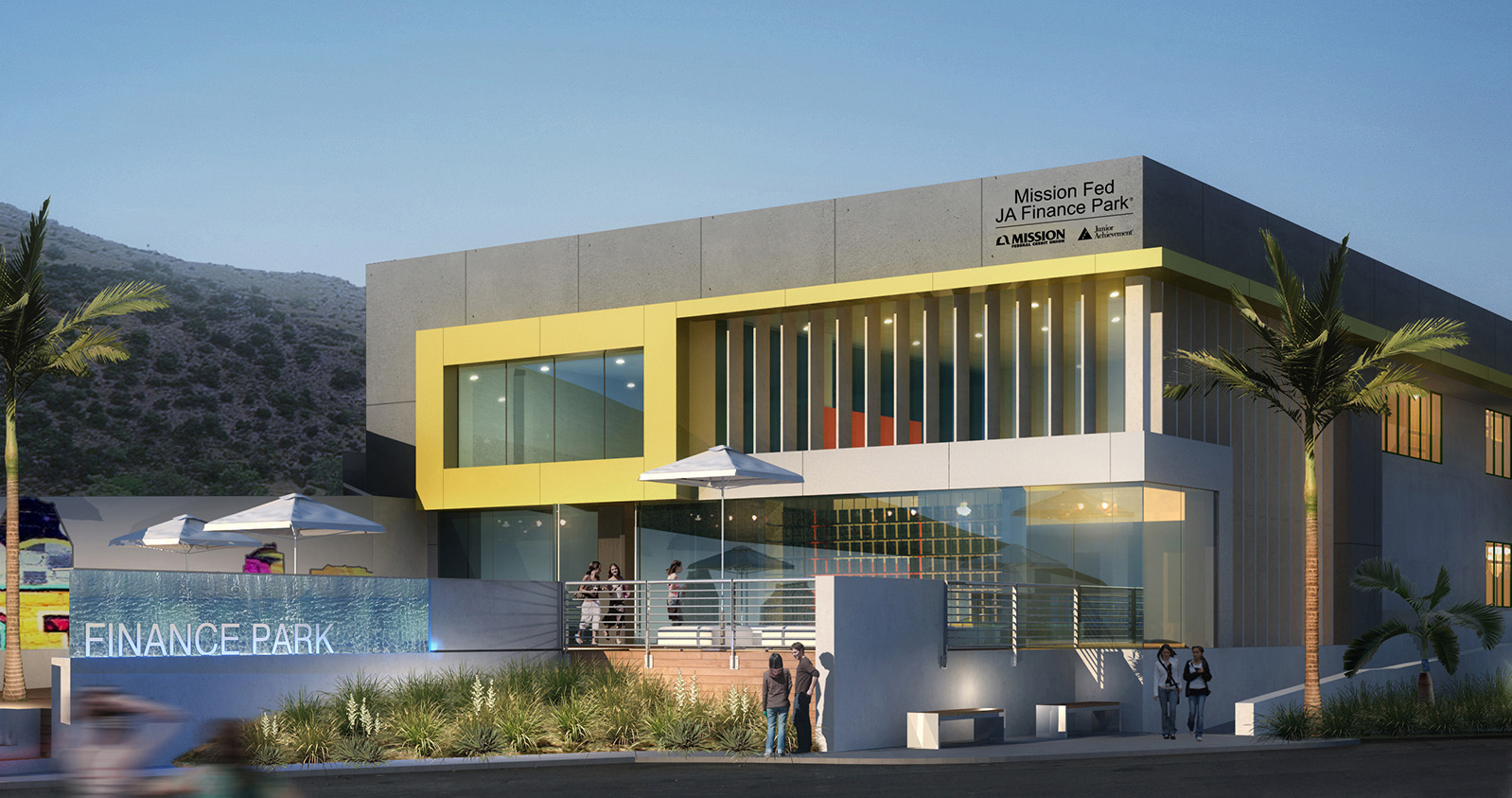
Junior Achievement to Host Opening
Of New Mission Fed JA Finance Park
Junior Achievement of San Diego County will hold grand opening ceremonies Thursday for its newest eduction center — Mission Fed JA Finance Park.
The event will be from 5:30 to 8 p.m. at the Capdevilla Gillespie Center for Junior Achievement, 4756 Mission Gorge Place, San Diego.
Mission Federal Credit Union provided $1 million in funding to name the new financial literacy center.
Built by Balfour Beatty Construction and designed by the architect firm of Gensler, the 6,300-square-foot, high-tech facility takes “reality-based” learning to a new level by placing students in authentic, real-world scenarios, where they take control of their financial decisions. The JA Finance Park experience allows students to imagine who they want to be, while providing hands-on tools to plan for their future and reach their full career potential.
“San Diego success lies in the cultivation of our young people. To ensure our growth and competitiveness we need to cultivate the next generation of professionals right here on our home turf, which is why we are thrilled to bring Finance Park to the San Diego community,” said Joanne Pastula, president and CEO at Junior Achievement.
When students first enter the park, they will not find paper or pencils. Instead, students go through the simulation using Samsung tablets and mobile app technology. Incorporating technology into student learning is important because the park appeals to a generation that relies heavily on technology to navigate everyday needs.
Students then receive a “life situation” and income based upon a real San Diego job they chose in the classroom. They are challenged to research and make the best choices for “families” based on their “salaries.” It starts by visiting 14 shops and five freestanding kiosks, where students have to buy a car, shop for groceries, purchase a home, make investments and donate to charity.

Hacking Into Big Data
Hakathon Set for Oct. 3-4 and Oct. 10
SDSU NewsCenter
San Diego State University’s Center for Human Dynamics in the Mobile Age will host its first-ever Big Data Hackathon Oct. 3-4 and Oct. 10 to encourage participants to find hidden patterns in data sets. The goal is to create data-based apps, platforms or technology to improve society.
The event is free and open to both students and community members, who will form teams and use a variety of open-source databases to tackle one of three themes:
• Water conservation and drought
• Disaster response and assistance
• Crime monitoring and prevention
For the first two days of the event, teams will decide which theme they want to work on, pore over the commonly available databases and develop some strategy for using the data to promote positive change. Throughout the afternoon, speakers from the academy, industry and public agencies will give talks related to the challenge’s themes.
Groups will present a preliminary proposal on Oct. 4. Those who receive high marks from the judges will continue to hone their ideas over the next week. On Oct. 10, the finalists will submit their final proposals and present their ideas. Judges will award $1,200, $600 and $300 to the teams with the three best proposals, as well as a $200 prize for the best teamwork.
The organizers of the event stressed that teams need more than just people who are adept at coding software. Good teams might require software expertise, graphic designers, marketing knowhow, geographic information systems knowledge, entrepreneurial experience and journalists to form the project. SDSU faculty and students, as well people from the community, will be mentors to provide technical advice and assistance.
Click here for more details, including a full agenda and information on registering.
Grossmont College Awarded Grant
To Help Hispanic, Low-Income Students
Grossmont College has been awarded a five-year, $2.62 million federal grant that will fund a proposed program aimed at helping Hispanic and low-income students succeed in their classes and progress toward graduation.
The Title V grant from the U.S. Department of Education was awarded to the East County college, where about 31 percent of its 18,000 students identify as Hispanic. “I am delighted that our college received this highly competitive and prestigious grant,” said Grossmont College President Nabil Abu-Ghazaleh. “It is truly demonstrative of our college’s commitment to our students’ success.”
The grant funds will be used to create a program called Vía Rápida, which will assist the college with:
• Latino student, family and community outreach.
• Outreach to students in all low-income families who have not historically had access to college.
• Strengthening placement and assessment preparation.
• Accelerated options in developmental English and math.
• Connections to the college community.
• Professional development for faculty and staff.
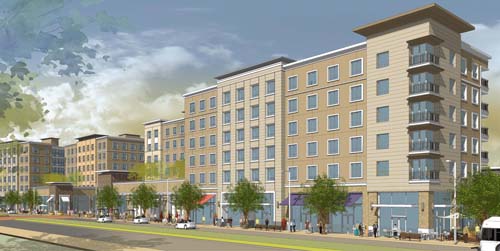
Student Housing and Retail Project
Taking Shape at San Diego State
==== South Campus Plaza to house 600 students ====
Construction is well underway for South Campus Plaza, a mixed-use student housing and retail project at San Diego State University that has been in the planning stages for years.
South Campus Plaza, formerly known as Plaza Linda Verde) will include housing for more than 600 students, along with retail uses designed to serve both the campus and its surrounding neighborhoods, creating a pedestrian friendly destination for shopping, dining and living.
Located immediately south of the SDSU Transit Center, between Hardy Avenue and Montezuma Road, South Campus Plaza will provide a gateway to the university, helping to create a sense of place, while also helping SDSU become a more residential campus, officials said.
Demand for on-campus housing remains high and research shows that students who live on campus have higher GPAs and graduate faster than their peers. Upon completion, the residence halls will offer double- occupancy student rooms, and apartments for residential education staff and visiting scholars. The halls also will feature student learning spaces, multipurpose rooms, faculty offices, study areas, lounges and a community kitchen. Student amenities in the building also will include a mail room, bicycle storage, laundry room and trash chutes.
The retail component of South Campus Plaza will include a community market store, restaurants and other retail shops. Negotiations with future tenants are ongoing.
The project will consist of 225,000 gross square feet of residential and retail space and 122,000 gross square feet for the parking structure. The $143 million project is funded by system-wide revenue bonds that will be paid back by retail, housing and parking revenue generated by the project. No state funds, tuition or fees are being used.
This addition of housing will help SDSU achieve its goal to house 10,000 of its students either on campus, or within walking distance of campus in university-affiliated housing or nearby apartment complexes.
Source: SDSU
Qualcomm to Invest $150 Million
In Indian Startup Companies
Times of San Diego
Qualcomm announced Sunday it will invest up to $150 million in Indian startup companies, the same amount that it is investing in Chinese startups.
The announcement came as executives of the global wireless leader met with Indian Prime Minister Narendra Modi in Silicon Valley. Modi spent the weekend meeting tech company executives and spoke at an Indian community reception in San Jose attended by more than 18,000 people.
“We share Prime Minister Narendra Modi’s vision to transform India into a digitally empowered society and knowledge economy. India is at the cusp of a technology revolution and mobile technologies will lay the foundation for Digital India,” said Dr. Paul E. Jacobs, executive chairman of the company. “We are committed to providing local innovative start-ups with the support needed.”
“Digital India” is the prime minister’s vision for using high-speed Internet access and tech jobs to raise the standard of living in a country where many still live in poverty.
Qualcomm has been investing in promising Indian startups through Qualcomm Ventures since 2007, and there are more than 20 Indian companies as part of its global portfolio.
Earlier this year Qualcomm said it would also create a $150 million investment fund for companies in China to develop mobile and semiconductor technologies.
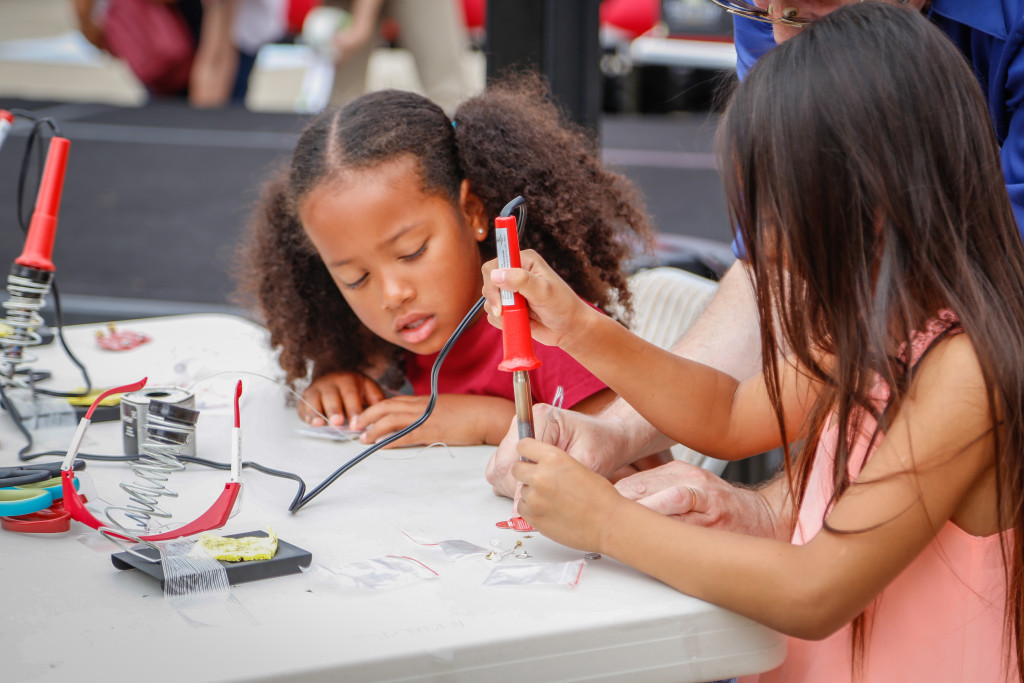
Maker Faire Celebration of Innovation
Making Weekend Visit to Balboa Park
Times of San Diego
Maker Faire San Diego, a celebration of hand-made technological and artistic innovation, comes to Balboa Park this coming weekend.
The two-day event is a showcase of invention and creativity and a celebration of the growing maker movement, bringing together tech enthusiasts, crafters, educators, tinkerers, hobbyists, engineers, science clubs, authors, artists, students and commercial exhibitors.
The first Maker Faire was held in May 2006 in the San Francisco Bay Area, launching a movement that is now nationwide.
The San Diego festival starts at 10 a.m. Saturday with a fire-breathing robot, cupcake cars roaming around the Plaza de Panama, a rolling remote controlled AR-duo and Russell, the giant 12 foot electric giraffe.
Participants will be able to make air-rockets, LED button lights, self-watering planters and automatons. Plus, there will be lasers, 3D printers, drones, intricate crafts, and a huge array of the newest technology
Tickets are $20 for adults and $12.50 for children for a single day. They are available in advance online and include admission to 10 museums in Balboa Park.

